Physical Address
Suite 5, 181 High Street,
Willoughby North NSW 2068
Physical Address
Suite 5, 181 High Street,
Willoughby North NSW 2068
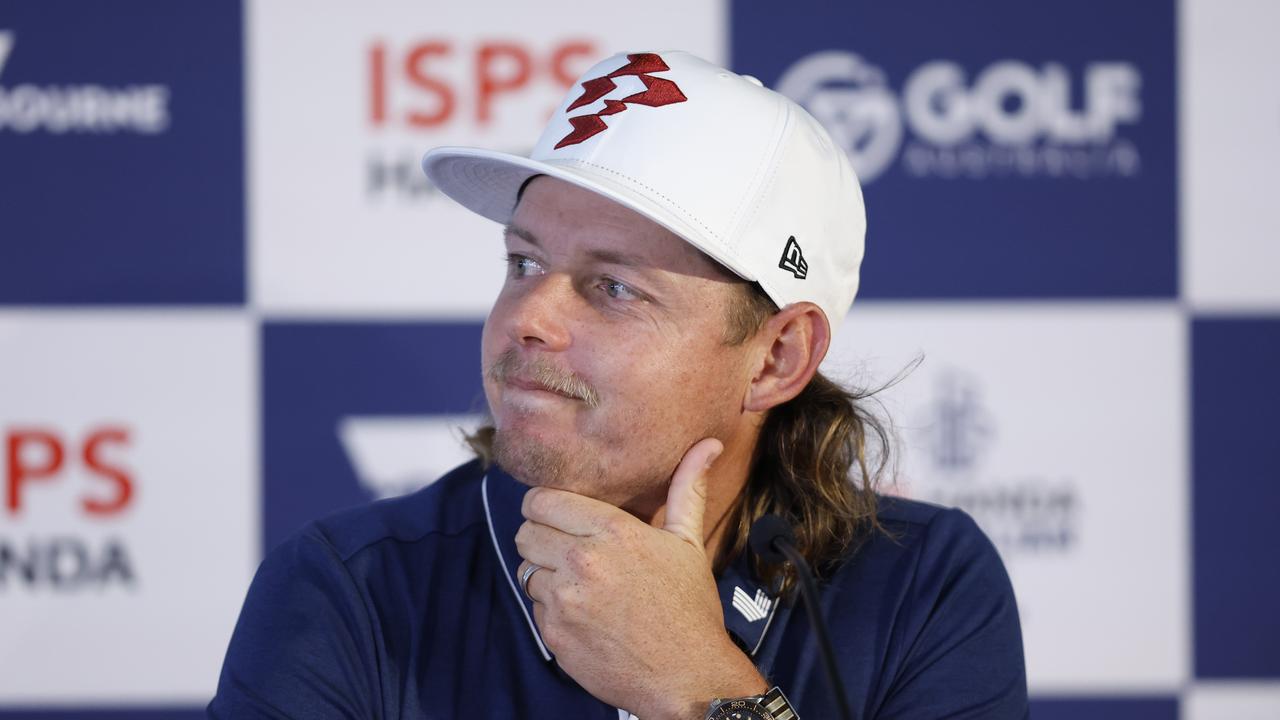
Swish! Party hole ERUPTS after epic ace | 02:29
Golf’s Australian Open is going back to the future.
Watch every round of the PGA Tour LIVE & Exclusive on Fox Sports, available on Kayo. New to Kayo? Get your first month for just $1. Limited time offer.
Last weekend, Golf Australia revealed that its three-year experiment to stage the men’s and women’s national opens on the same course at the same time was done.
The move was hailed as a “world-first” when it was unveiled back in 2022, but scathing player feedback, particularly from Cameron Smith last year, led to the call to revert to the old ways.
The men’s Australian Open is set to remain in the regular November/December timeslot, while the women’s Australian Open is reported to return to February when it was held prior to the Covid-19 pandemic.
The mixed-gender format was praised for bringing in decent crowds who enjoyed the opportunity to watch major champions like Smith and Hannah Green tee off roughly ten minutes apart, or to witness superstar siblings Min Woo and Minjee Lee play in successive groups.
But player criticism of the logistical, broadcast and course set up issues created by running two events in one – three when you factor in the Australian All-Abilities Championship – ultimately proved to be the format’s downfall.
Plenty of questions linger about how the separate tournaments will be staged, and we dive into where it went wrong and what the future holds for Australia’s marquee men’s and women’s golf events.
THE PLAYER REVOLT
“Bulls*** excuse”.
It was the two words that sent the Australian Open into a frenzy on the eve of the tournament.
Cameron Smith was not happy with what he was greeted with at Kingston Heath and Victoria in Melbourne.
The 2022 British Open champion was expecting the dry, firm and fast conditions the Melbourne Sandbelt is world-famous for, similar to the state of the Old Course at St Andrews when he lifted the Claret Jug.
But as he prepared for a shot at winning his national title for the first time, Smith came across drenched greens and lush fairways more akin to an American set up.
He believed it had been done that way on purpose, not because of the days of storms that lashed Melbourne in the lead-up.
“I’ve played down here at Kingston Heath in an Aussie Masters, and I’ve told this story a lot actually, where I was allowing 25-30 metres of run out with a pitching wedge which is a lot,” Smith said in November.
“Usually around the world you’re trying to take spin off, make sure it doesn’t spin back too much. I think when you get to a place like this, where it’s meant to play like that, you have to create spin and create shots to get close to pins which is what everyone really loves.
“The weather down here the last couple of weeks has been pretty good, I know they got some rain over the weekend and again this morning, but I’ve played down here in rain before, and it’s still been like that the next day.
“So, I think that’s a bulls*** excuse, to be honest. I think it’s been prepared like this for a reason and it’s now how these golf courses are meant to be played.”
Smith’s comments came after Adam Scott had earlier shared his displeasure with the format with Golf Australia Magazine.
Scott opted to sit out the Australian Open for the first time since 2018 citing the need to rest after a taxing season, but after finishing runner-up in the first combined event in 2022, he was outraged by the controversial 54-hole cut, which was discarded the following year.
“The format isn’t ideal for the men or the women,” Scott said.
“And the two-cut thing didn’t work. You could have been 32nd on Sunday and not even playing in your national Open. I don’t care if you are Cam Smith – who actually missed it a couple of years ago – or a 16-year-old hotshot in his first Aussie Open. You don’t want to be sitting out on Sunday.
“I would have been gutted if that was me. Overall though, there is a place for different formats, but your national Open is not the place for that.”
Smith was indicating that gender was the reason for the unusual conditions.
The murmurs among men’s players had been that the women needed the greens softer, and the pins to be more accessible because they cannot generate the same levels of spin that their male counterparts can.
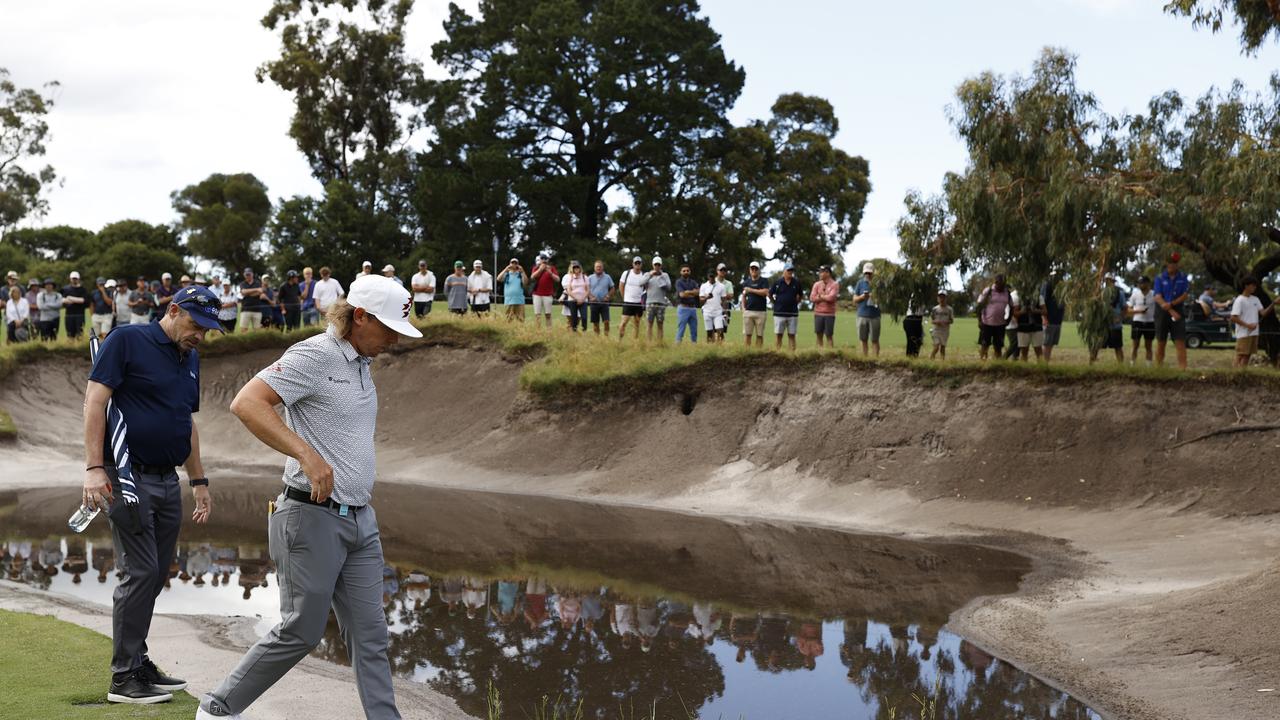 MELBOURNE, AUSTRALIA – NOVEMBER 28: Cameron Smith of Australia speaks to a Rules Official as he prepares to play his second shot from the bunker on the first hole on day one of the ISPS Handa Australian Open 2024 at Victoria Golf Club on November 28, 2024 in Melbourne, Australia. (Photo by Darrian Traynor/Getty Images)Source: Getty Images
MELBOURNE, AUSTRALIA – NOVEMBER 28: Cameron Smith of Australia speaks to a Rules Official as he prepares to play his second shot from the bunker on the first hole on day one of the ISPS Handa Australian Open 2024 at Victoria Golf Club on November 28, 2024 in Melbourne, Australia. (Photo by Darrian Traynor/Getty Images)Source: Getty ImagesThus, the notion was that on rock-hard greens, the women’s scores would pale in comparison to the men’s.
WPGA Tour of Australasia CEO Karen Lunn believes that idea is a load of nonsense, and she told foxsports.com.au that generally, the females enjoyed the format.
“On socials there were obviously a lot of the male players that were really happy about it (being separated) because they never bought into the format, which I always thought was a bit of a shame,” the 1993 Women’s British Open champion said.
“Ultimately, none of us are bigger than our sport and I thought the joint Opens were a great initiative in terms of growing our sport. The three mixed years we had were all really successful events, great crowds and excellent broadcast numbers.
“Ultimately, it was the players. The male players didn’t really like the event.
“They didn’t feel that the courses were being set up tough enough for them, but I don’t know whether the scores would illustrate that.
“Last year at Kingston Heath and Victoria we just had so much rain that made the courses soft. It definitely was not intentional at all.
“It’s disappointing in one way, but it’s a new fresh start for the women’s Aussie Open.”
The was only one-shot difference between men’s champion Ryggs Johnston and women’s winner Jiyai Shin, but only 13 women finished better than even par after 72 holes compared to 51 men.
But that discrepancy possibly has more to do with scheduling, and the quality of field timing can attract, than course set up.
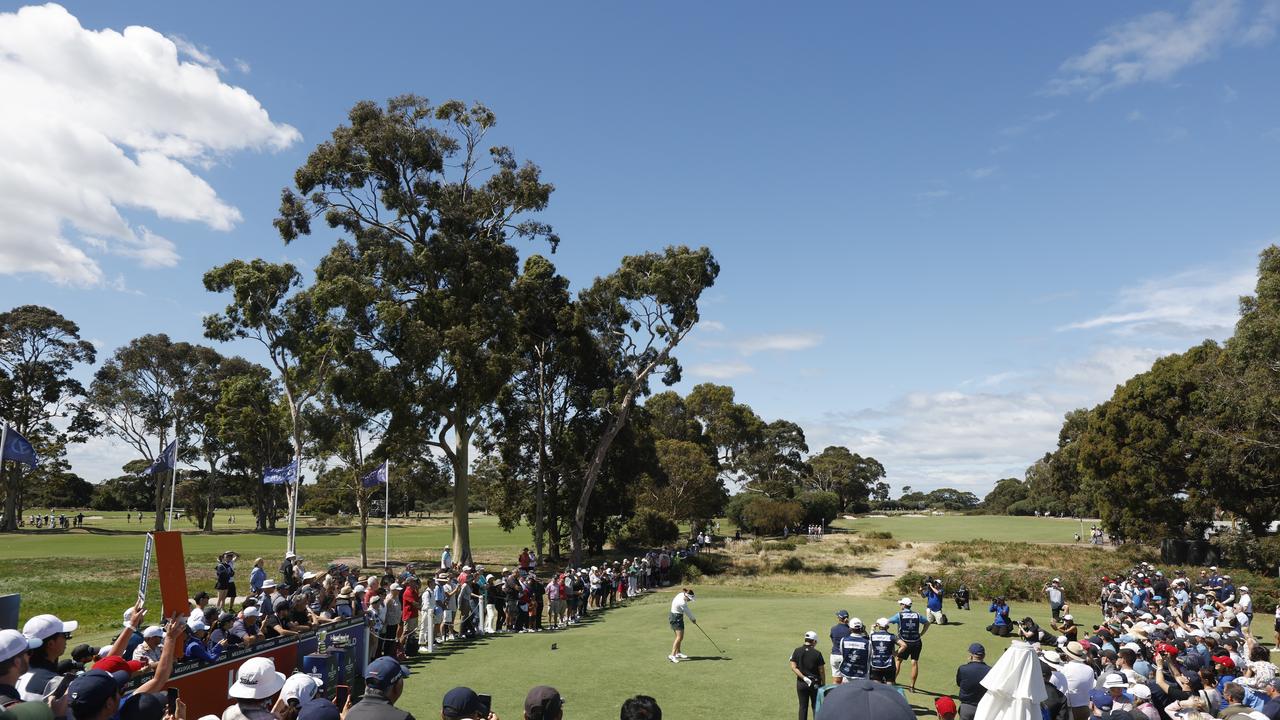 MELBOURNE, AUSTRALIA – DECEMBER 01: Hannah Green of Australia tees off on the first hole on day four of the ISPS Handa Australian Open 2024 at Kingston Heath Golf Club on December 01, 2024 in Melbourne, Australia. (Photo by Darrian Traynor/Getty Images)Source: Getty Images
MELBOURNE, AUSTRALIA – DECEMBER 01: Hannah Green of Australia tees off on the first hole on day four of the ISPS Handa Australian Open 2024 at Kingston Heath Golf Club on December 01, 2024 in Melbourne, Australia. (Photo by Darrian Traynor/Getty Images)Source: Getty ImagesWOMEN’S AUS OPEN COULD RETURN TO GLORY DAYS
For the men’s, keeping the same date should mean that the Australian Open stays as a DP World Tour co-sanctioned event.
The national open, along with the Australian PGA Championship, which is played the week prior, served as part of the formerly named European Tour’s ‘Opening Swing’ this season and the co-sanctioning is vital to hand up-and-comers more opportunities.
Highly touted 22-year-old Queenslander Elvis Smylie and American Ryggs Johnston earned themselves two-year exemptions to the DP World Tour for their respective victories in the Australian summer.
The carrot dangling in front of local PGA Tour of Australasia players, and new graduates to the DP World Tour, is therefore massive.
For Australia’s established stars, the timing comes during the PGA Tour’s Fall Series, which means if their card is sewed up for the following year, they are free to venture home.
Last year, the Australian PGA was held the week after the DP World Tour Championship in Dubai, which is not ideal timing, and helped lead to Adam Scott’s decision to sit out his home tournaments.
That means it is going to be difficult to draw the likes of a Rory McIlroy or other European stars, but America’s big names may be the targets of tournament organisers.
Nevertheless, Australia’s LIV stars Smith, Marc Leishman and Lucas Herbert are big drawcards and with their season wrapping up in August, they have plenty of time to rest and play events back home like Smith did last year at the Queensland PGA and NSW Open, which Herbert won.
Fellow LIV gun Joaquin Niemann, who won the Australian Open in 2023, received an invitation to The Masters last year for his commitment to global golf by venturing down under.
If the PGA Tour and LIV Golf split is not resolved by the end of the year, that could encourage further stars from the breakaway tour to come to Australia for a second trip for 2025 – they are in Adelaide this week.
But it is the women’s event which possesses the greatest opportunity in the co-sanctioning space.
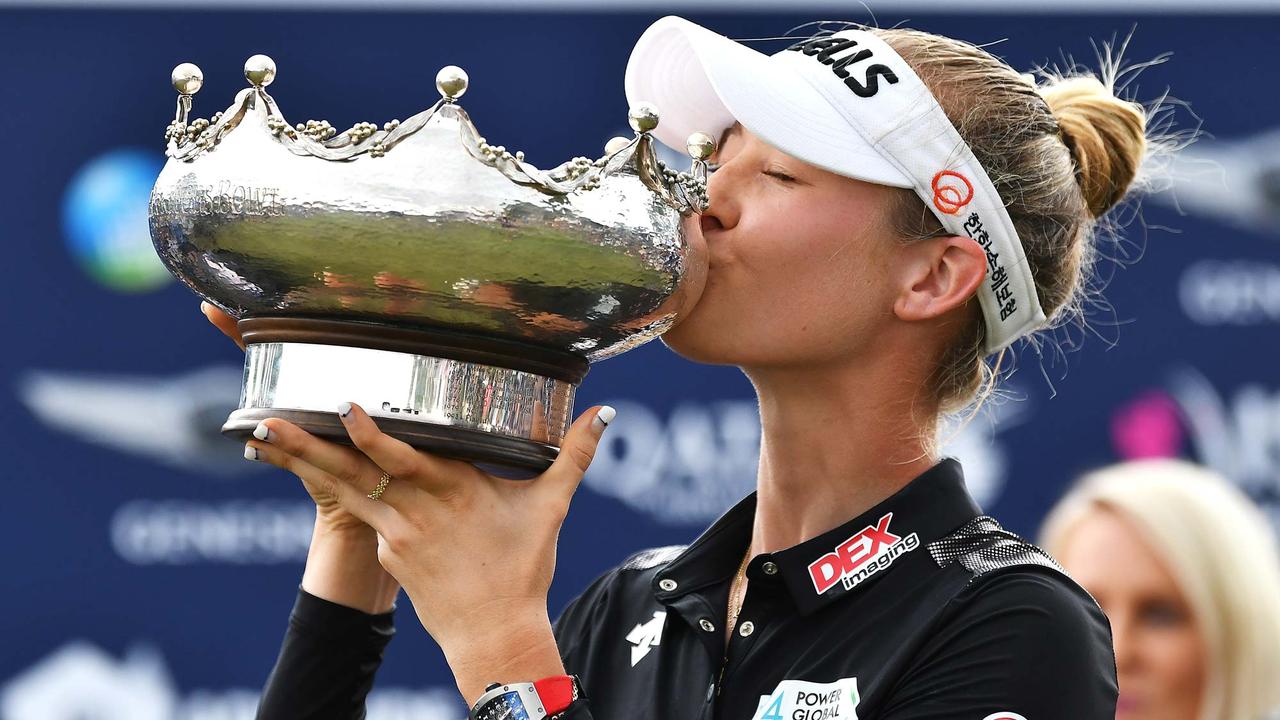 Current World No.1 Nelly Korda kissing the Patricia Bridges Bowl when she won the Australian Open in 2019.Source: FOX SPORTS
Current World No.1 Nelly Korda kissing the Patricia Bridges Bowl when she won the Australian Open in 2019.Source: FOX SPORTSFrom 2012 to 2020, the Women’s Australian Open was an LPGA event.
World No.1 Nelly Korda and Olympic gold medallist Lydia Ko were among the champions in that time, and the tournament now has a clean slate to regain that status.
The mixed-gender format operated without a co-sanctioning partner as the timing at the end of the calendar year suited no other schedules.
Last year’s tournament was even played the week after the LPGA’s Tour Championship.
Green, Lee and Grace Kim all arrived in Melbourne from Florida roughly 24 hours before their opening round tee times.
They did not even get the chance to play a practice round because of storms.
It was far from ideal preparation for the top local hopes who were looking to become the first Australian champion since the great Karrie Webb in 2014.
But a move to the start of the season will be far more accommodating, and Lunn said that talks have already taken place with the LPGA and Ladies European Tour.
She also said they have not ruled out partnering with the booming Ladies Asian Golf Tour, the Japanese LPGA or the Korean LPGA as the long-term version is to schedule the Australian WPGA Championship, which will be revived next month, and the Australian Open back-to-back.
“It’ll fit in a lot better with the other events. Being at the end of the year, it was almost impossible for us to get a strong co-sanctioning partner which we needed to really bolster the field,” Lunn said.
“For our LPGA players, and your LET players, the date really sucked for them. It’s a testament to how much they love coming home, and love the Aussie Open, that Minjee, Hannah, Steph and Grace played last year.
“It’s a great era for Aussie women’s golf with our girls doing so well, so we can attract a strong co-sanctioning partner and in early 2026 we’ll be off and running again.”
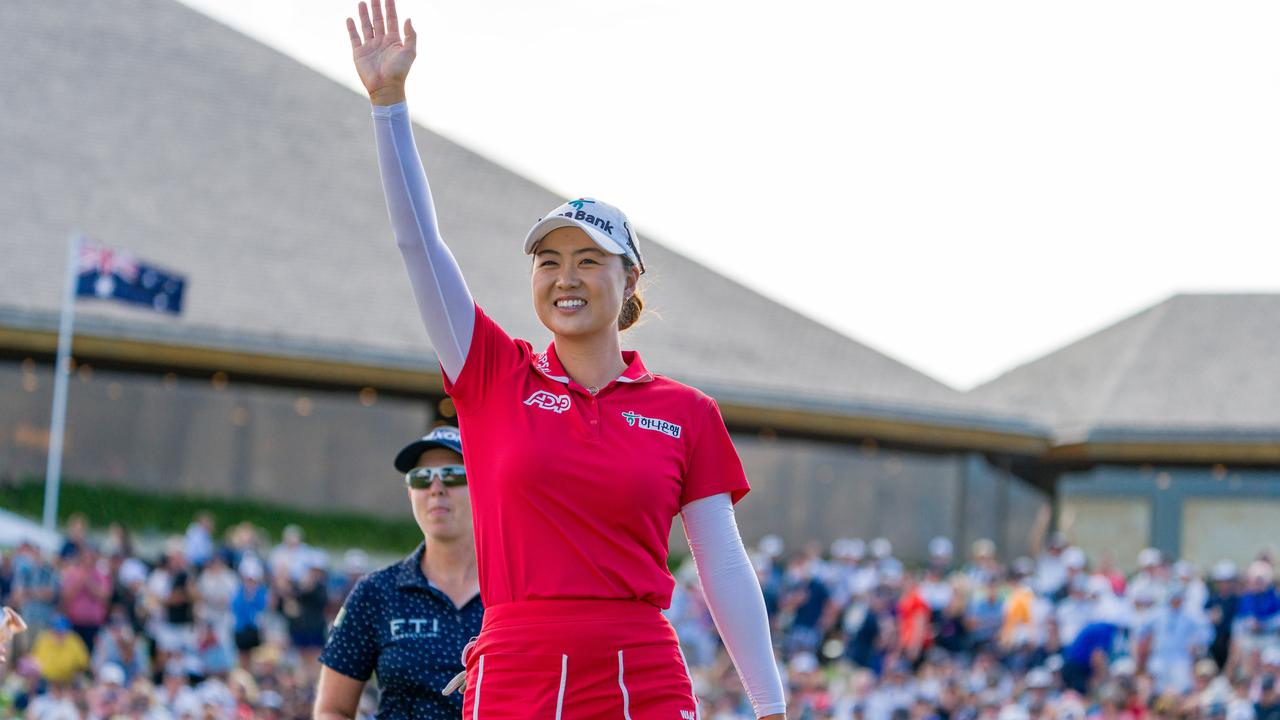 SYDNEY, AUSTRALIA – DECEMBER 03: Minjee Lee of Australia acknowledges the crowd after her final round on the 18th hole during the ISPS HANDA Australian Open at The Australian Golf Course on December 03, 2023 in Sydney, Australia. (Photo by Andy Cheung/Getty Images)Source: Getty Images
SYDNEY, AUSTRALIA – DECEMBER 03: Minjee Lee of Australia acknowledges the crowd after her final round on the 18th hole during the ISPS HANDA Australian Open at The Australian Golf Course on December 03, 2023 in Sydney, Australia. (Photo by Andy Cheung/Getty Images)Source: Getty ImagesTHE PRIZE PURSE DILEMMA
One of the most acclaimed aspects of the combined Australian Open was equal prize money for men and women, like tennis’ grand slams.
The prize pool was $1.7 million for each field last year, and the topic lingers as one of the most intriguing aspects of the split.
Lunn understands that Golf Australia intend to support each event with equal prize purses again, but at this stage, it remains unclear whether that will eventuate.
“There’s certainly an intention from their side to have the equal prize money. I think it would be a step backwards if that didn’t happen,” she said.
“But obviously, we understand the commercial reality of sport in Australia and to try and get $1.7 million in prize money, you’re looking at a budget of probably $4 million. It’s a lot of money, whether it be government or corporate sponsorship.
“The commercial attraction to the joint Open was that for a lot of companies it ticked the inclusivity and diversity boxes. You haven’t got that sell now.”
Golf Australia CEO James Sutherland addressed during last year’s tournament that one of the key factors in favour of the mixed format was that the organisation’s commercial partners were fans.
For example, tournament naming partner ISPS Handa is synonymous with sponsoring women’s sport.
They are involved in the LPGA and Ladies European Tour, while their logo is sported on the guernseys of Australia’s women’s rugby sevens team, who play their matches at the same venue as the men, as well as Hannah Green’s on course attire.
“It’s no secret that some of our leading men’s players don’t like the format, but they like the date. And on the flip side, some of our leading female players don’t like the date, but like the format,” he said in December.
“And so the simple answer to that is to separate the two events at different times … but it’s not quite that easy.
“In the cold, hard light of day, we need to consider what we do in the best interest of Australian golf and make good decisions around that.
“There’s a whole lot of very, very important stakeholders that bring this event together and make it economically viable and financially sustainable, but also sustainable in terms of getting the outcomes we want that need to be consulted and work with along the way.”
The “simple answer” clearly won out, but it will be a fascinating watch as to whether corporate partners arrange deals for both tournaments going forward.
It is not the only issue the split needs to solve, however.
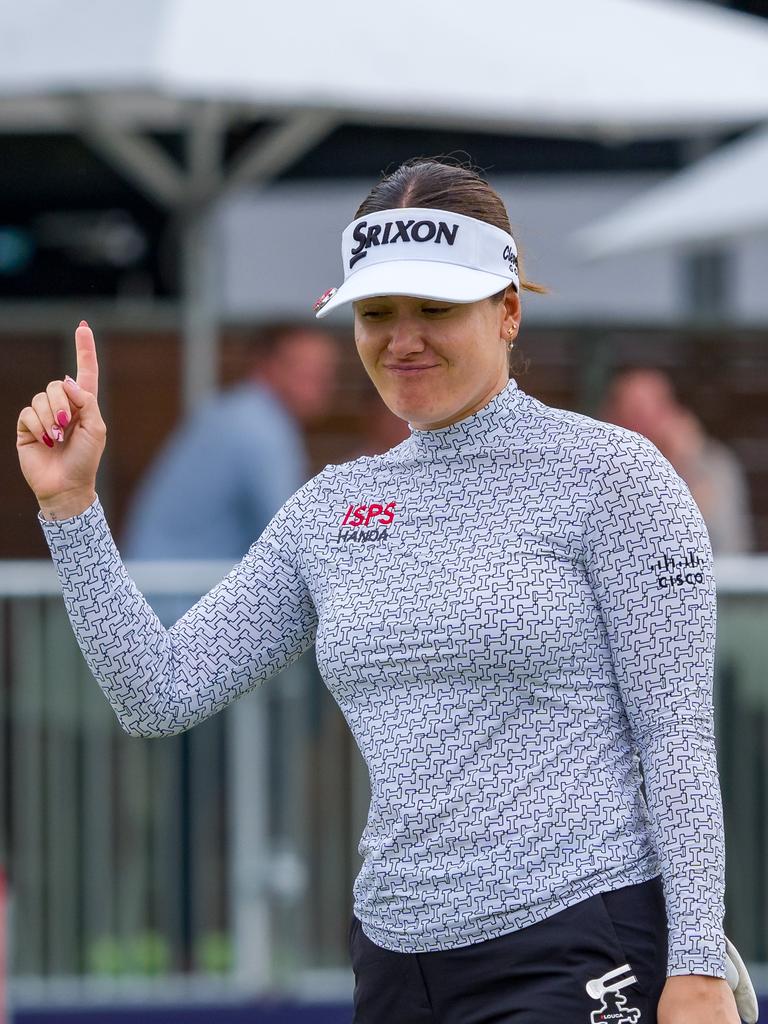 MELBOURNE, AUSTRALIA – NOVEMBER 30: Hannah Green of Australia celebrates after a birdie putt on the eighteenth green on day three of the ISPS Handa Australian Open 2024 at Kingston Heath Golf Club on November 30, 2024 in Melbourne, Australia. (Photo by Andy Cheung/Getty Images)Source: Getty Images
MELBOURNE, AUSTRALIA – NOVEMBER 30: Hannah Green of Australia celebrates after a birdie putt on the eighteenth green on day three of the ISPS Handa Australian Open 2024 at Kingston Heath Golf Club on November 30, 2024 in Melbourne, Australia. (Photo by Andy Cheung/Getty Images)Source: Getty ImagesGIVING CREDIT WHERE CREDIT IS DUE
Across the three editions of the combined Australian Open, there was a strong feeling that the women were slipping into the background.
There was no better example of it than the leading women’s group beginning their final round last year two hours before the broadcast began.
Eventual champion Jiyai Shin produced one of the highlights of the tournament with a hole-out for eagle from the wastage area on the fourth hole at Kingston Heath, but unless you were out on course, you could not see it live.
Fans on their couches saw a replay hours later as the women seemingly cleared the decks for the top men’s groups.
It played into the ideas that Australia’s top female golfers are often out-of-sight, out-of-mind among the public.
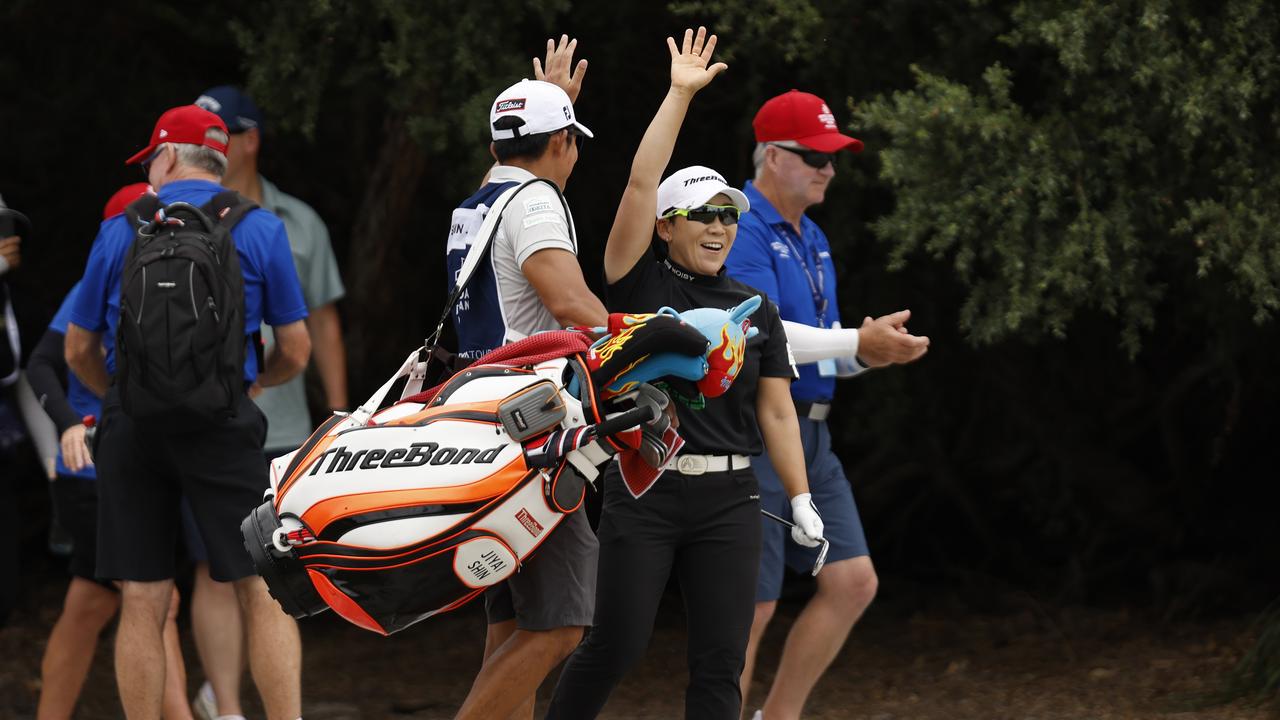 MELBOURNE, AUSTRALIA – DECEMBER 01: Jiyai Shin of Republic of Korea reacts with her caddie after holing out for eagle on the fourth hole on day four of the ISPS Handa Australian Open 2024 at Kingston Heath Golf Club on December 01, 2024 in Melbourne, Australia. (Photo by Darrian Traynor/Getty Images)Source: Getty Images
MELBOURNE, AUSTRALIA – DECEMBER 01: Jiyai Shin of Republic of Korea reacts with her caddie after holing out for eagle on the fourth hole on day four of the ISPS Handa Australian Open 2024 at Kingston Heath Golf Club on December 01, 2024 in Melbourne, Australia. (Photo by Darrian Traynor/Getty Images)Source: Getty ImagesTwo-time major winner Minjee Lee has repeatedly been referred to as an ‘invisible champion’, while fellow major winner and current world No.6 Hannah Green has not received the plaudits she deserves for a stellar past year.
The West Australian won three times on the LPGA where she is competing against several Australian rising stars including Steph Kyriacou, Grace Kim and Gabi Ruffels.
The return to a stand-alone Australian Open gives them the chance to step into the spotlight and not slip in behind the likes of Smith, Scott or Minjee’s little brother Min Woo.
“That’s maybe one of the other criticisms of the joint event was the women being overshadowed by the men,” Lunn said.
“People say the men had a lot more people watching them, I don’t think that’s necessarily true. If they were overshadowed at all, that’s a shame but this will certainly give them the platform to be promoted and recognised as the great players they are.
“We’ve got some great young players coming through the system now, so we’re only on the up in terms of creating a new generation of Australian stars to follow on from the likes of Minjee and Hannah, and we want to make sure we showcase them as well.
“If you look at how many players we have playing over there, they don’t get the recognition they deserve.
“The fact we have nine women on the LPGA this year is absolutely fantastic and from last year, every time you look at a leaderboard there’s an Aussie flag or maybe two in the top 20.”
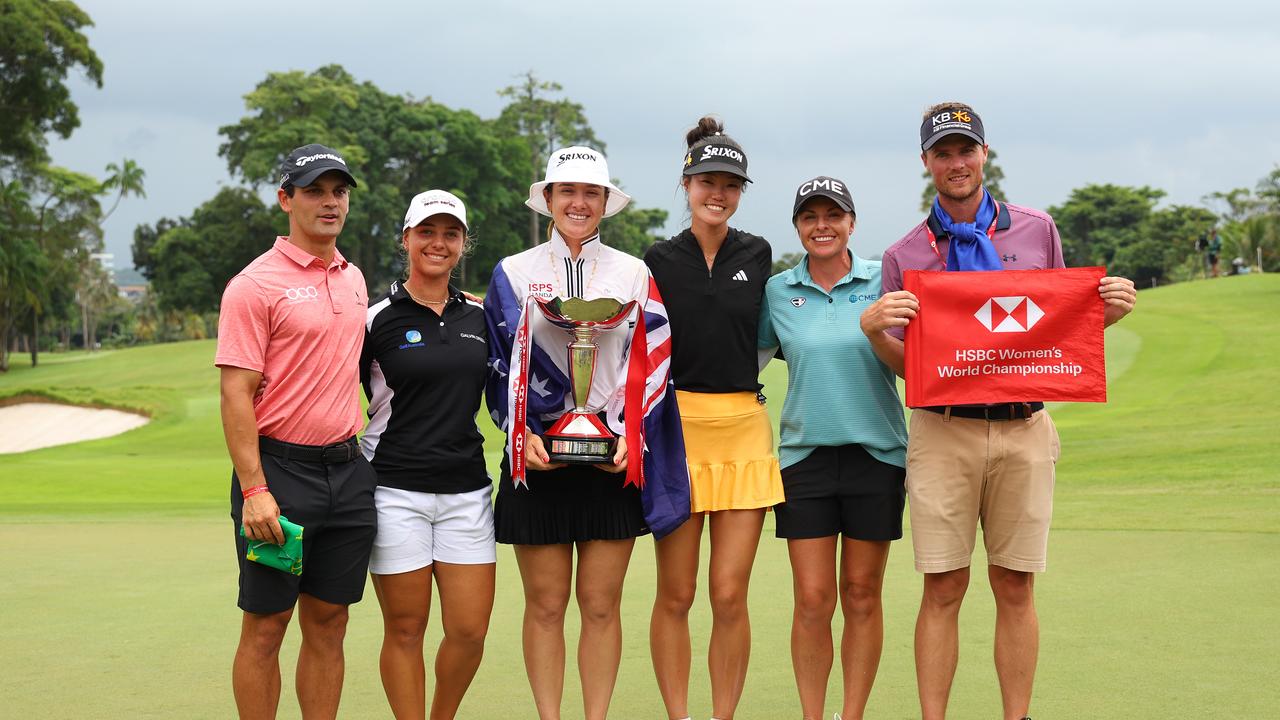 SINGAPORE, SINGAPORE – MARCH 03: Hannah Green of Australia celebrates with the trophy on the 18th green, posing with her caddie, Stephanie Kyriacou of Australia, Grace Kim of Australia andSarah Kemp of Australia during Day Four of the HSBC Women’s World Championship at Sentosa Golf Club on March 03, 2024 in Singapore. (Photo by Andrew Redington/Getty Images)Source: Getty Images
SINGAPORE, SINGAPORE – MARCH 03: Hannah Green of Australia celebrates with the trophy on the 18th green, posing with her caddie, Stephanie Kyriacou of Australia, Grace Kim of Australia andSarah Kemp of Australia during Day Four of the HSBC Women’s World Championship at Sentosa Golf Club on March 03, 2024 in Singapore. (Photo by Andrew Redington/Getty Images)Source: Getty ImagesTHE VENUE CHALLENGE
One huge aspect where Golf Australia would like to be more organised than last year is locking in venues for the separate tournaments.
In 2024, the tournament organisers did not announce Kingston Heath and Victoria as hosts until July.
This was a serious difficulty for players who like to plan out their year well in advance.
The men’s obviously has less time than the women’s with Lunn saying confirming a course for roughly this time next year is “a few months down the track”.
Melbourne hosted two of the three combined Australian Opens, while Sydney hosted the 2023 edition and staged the stand-alone men’s tournament from 2006 to 2019.
But looming for the men’s is the 2028 Presidents Cup at Kingston Heath, so some possible US and International team stars may be enticed in the coming years to gain experience on the Melbourne Sandbelt, if the tournament remains there.
Meanwhile, for the women, Adelaide played host to the stand-alone event from 2016 to 2020, but the South Australian government has since made the annual LIV event their own.
The eventual hosts of the two tournaments remain pure speculation, but no matter it is held, Golf Australia will be pleading with the weather gods to play ball for their two new, but old, Australian Opens.